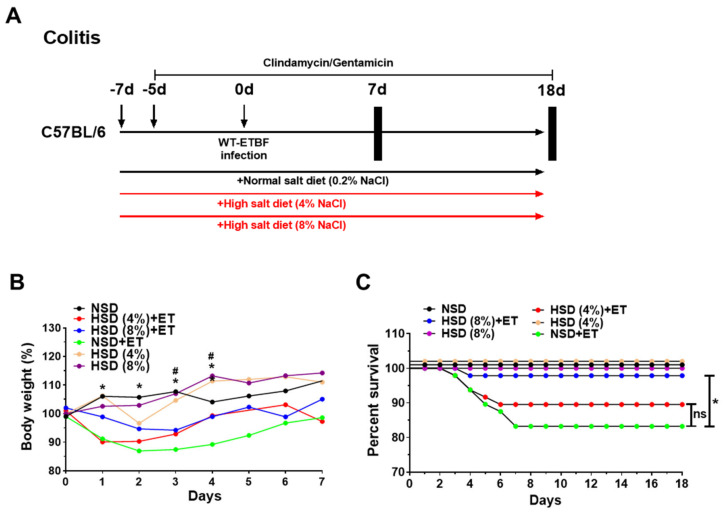Figure 1.
Experimental scheme and effects of high salt diet (HSD) on body weight and survival curve in enterotoxigenic Bacteroides fragilis (ETBF)-infected mice. Eight-week-old C57BL/6 female mice were inoculated with WT-ETBF (~1 × 109 CFU). HSD (4% and 8%) treated groups were given chow containing either 4% NaCl or 8% NaCl, respectively. C57BL/6 mice were sacrificed at day 7 (acute infection) or day 18 (chronic infection) post-infection. The total experimental period was 25 days. (A) Experimental design of the ETBF-induced colitis model. (B) Body weight change (days 1–7). The daily body weights of individual mice were normalized to their starting body weights. (C) Survival curve of C57BL/6 mice. Kaplan–Meier curves depicting survival after WT-ETBF infection. Results were pooled from three independent experiments (n = 15–20 mice per group). * p < 0.05, Mantel–Cox log-rank test. NSD, normal salt diet; HSD, high salt diet; ET, ETBF. HSD (4%) + ET vs. NSD + ET, * p < 0.05; HSD (8%) + ET vs. NSD + ET, # p < 0.05. Significance between treated groups was determined using Mann–Whitney U tests. * p < 0.05; ns, no statistical significance.

